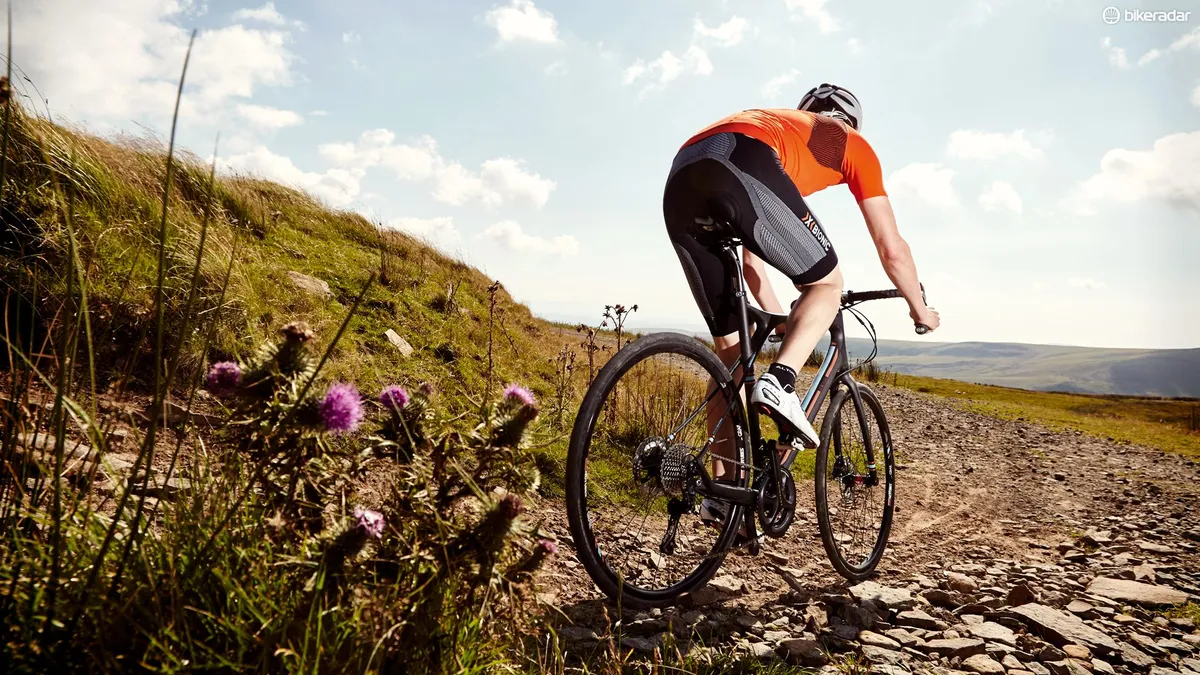In the beginning was the bicycle. This was around 1818, and it was its own niche. It was simple and allowed you to do everything from popping out to buy the newly-invented Stars ’n’ Stripes flag to riding out to buy the newly-invented fire extinguisher to put out your Stars ’n’ Stripes flag, all the way to dropping sweet hucks off the poorhouse roof past the polio sufferers.
- Less is more: why the 27.5 Plus standard is doomed
- What 'standard' really, really grinds your 8/9/10/11spd gears?
Skip forward to now — beyond the discovery of aluminium and the fact you can anodize it purple, the fashion-lead madness of reducing head angles from 90 degrees, and repeated attempts to justify tandems — and the bicycle has shattered into a million things.
Road, mountain, jump, gravel, TT, adventure, enduro, endurance, XC, all-mountain, hybrid… every season a new division of cells, a seemingly exponential splay towards infinite specialisation.
I won’t argue that we haven’t benefited so far. We’ve gained massively sophisticated machinery and lost nothing — nothing, that is, except stupendous early naming conventions. Why can’t we sneak off for a crafty smoke behind the velocipede sheds? Who denied us the huddle of admiration around an expensive new dandy horse? And when did it become uncool to shout ‘Hey baby, check out my new swiftwalker,’ with one’s stovepipe hat blown back at a rakish angle? It’s political correctness gone mad.
While progress flew, all the clever engineering was a boon for marketers. Marketing mostly consists of pointing out a problem and then the solution, preferably within inches of a fertile beauty who either really digs your swiftwalker or is getting chilly.
If the problem actually exists — for instance, your teak-framed dandy horse turns to matchsticks when you gas it to flat, to the delight of the polio sufferers — then it’s easy to sell the solution.

For instance, in the early 1800s, as it will be again soon, the solution was ‘Hunt the polio sufferers for sport, and drive them back into the sea.’ By the end of the 1800s, it was ‘Build bicycles out of steel’.
It’s much harder to sell bikes now the obvious needs — road, off-road, competition, leisure and commuting — are so well filled. It’s left the marketers scrabbling for new problems to worry us with, and for new products with which to fix them. That’s tough, because inspiration isn’t cheap (it’s £30-40 per gram) and marketing is hard anyway. No, really!
Here’s proof. The American Marketing Association defines marketing as 'The activity, set of institutions and process for creating, communicating, delivering and exchanging offerings that have value for customers, clients, partners, and society at large.'
Marketing is clearly so hard that even the board of directors of the AMA haven’t been able to boil that down to ‘Marketing is selling things’. Yet it tops this useful list of 72 definitions, which also includes Derridean philosophical wonders such as ‘Marketing is the messages and/or actions that cause messages and/or actions.’ See? If you’re in marketing, even working out what it is you’re doing is hard.
New niches
Which brings us to working out the differences between this summer’s hottest new marketing niches: gravel bikes, adventure bikes and all-roaders.
What isn’t in doubt is that they’re totally distinct from cyclocross bikes and utility bikes and road bikes with disc brakes and wide tyres, because… well, let’s just say covfefe.

At least for 2017 these road bike niches exist, if only in the heads and bloodstreams of those whose job it is to prise apart the edges of reality and insert the money catheters.
The mountain biking sphere has yet to find out what new niches will replace fat bikes (dead as long ago as last December, if the denials are any indication) and probably their Plus-sized replacements too.
Actually, 2017 is missing the biggest niche of all, the one we should nick from motorcycling: the cafe racer
Perhaps smaller wheels are the new bigger wheels? Smaller wheels are actually more efficient up to 16mph, according to Olympic gold-winning road racer Alexi Grewal, who should know. That makes them the best wheels for hard climbs. You need that.
On the other hand, in 2008 Grewal admitted to doping, so perhaps his perception was skewed, if not outright kaleidoscoping. Perhaps bikes with internally-routed sniffing straws that exit through the stem can be the new niche. While the pros enjoy ephedrine, amateur riders prefer a bit of euphoria along with the agitation, which means amphetamines. And so the 'fet bike' is born.
Then again, maybe wheel size is played out, and frame material is the new wheel size? Given that aluminium road frames are now being marketed as ‘lighter, stiffer and smoother’ than carbon ones — which were marketed as lighter, stiffer and smoother than aluminium — maybe it’s time alloy becomes off-road’s new carbon?
Or perhaps steel is the new aluminium for full-sus, which in turn was the new carbon, which was literally the new black.

Actually, 2017 is missing the biggest niche of all, the one we should nick from motorcycling: the cafe racer.
For road bikes, this will be an improbably sharp carbon thing that looks amazing leaning against Better Latte Than Never’s window on a Saturday morning, but features hidden suspension, a hidden 3hp motor and a compartment in the down tube called CakeHole(TM).
It will connect to your phone via an app which a) wirelessly tightens your under-Lycra corset whenever a sexy person gets with 20ft and b) can stat-bore up to six for an hour.
Best of all, the whole lot biodegrades harmlessly once abandoned in a garage for thousands of pounds of fishing equipment instead.
